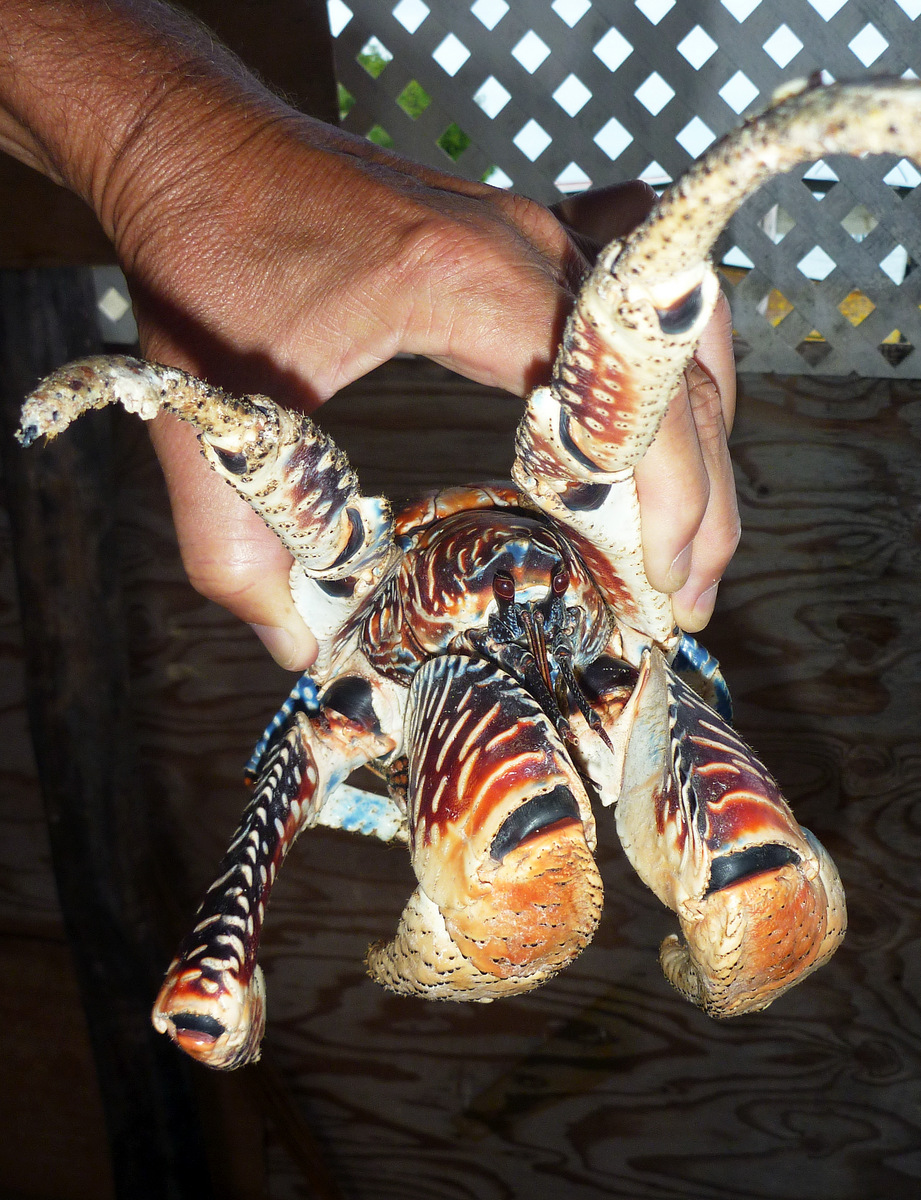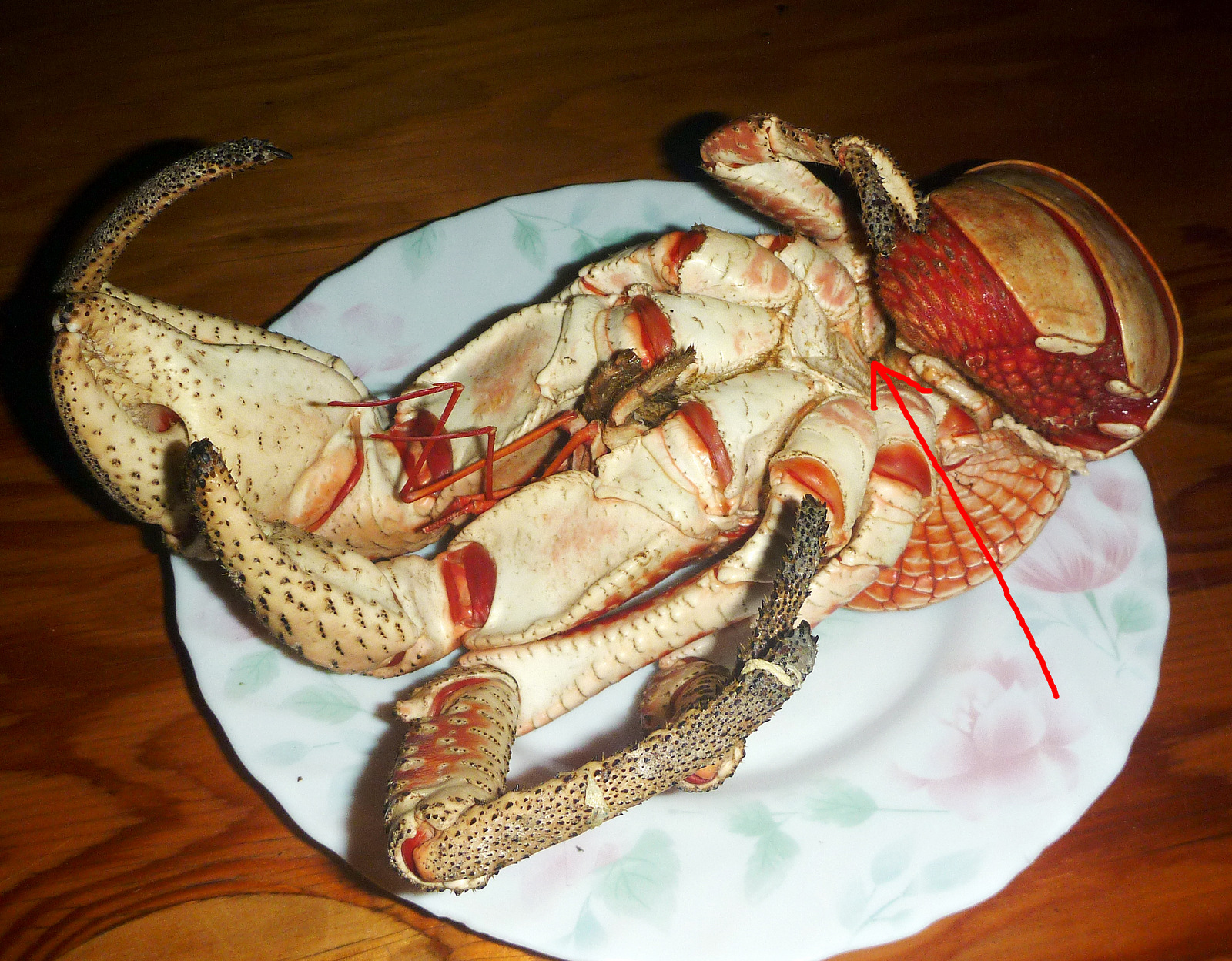| As many coconut crabs as you can find |
The first thing to be aware of is that the front claws are very, very powerful - they use them to rip open the fibrous husk of a coconut. Photograph 1 shows the crab clamped onto the lid of the plastic box that it was kept in - it wouldn't let go once it had got hold of something... To pick it up, you must make sure that you grip it across the back AND hold the front (biggest) two legs at the same time - as shown in photograph 2. You don't want it to get hold of one of your fingers...
Heat up a big pan of salted water (half sea water and half fresh water is good), pop the live crab into the pot, close the lid and simmer for 10-15 minutes depending on the size of your crab. Check every so often - the crab is done when it is a nice red colour as in the main photograph. (If you over cook it, then the abdomen can split open and the oily contents will spill out into your water and make a mess.)
Remove the crab from the pot and leave to cool for 15 minutes.
The crab has a tail, which looks similar to the tail of a Spiny Lobster, but doesn't contain any meat. Instead it is more like the abdomen of an insect - soft and squishy and full of a thick liquid/paste that the locals regards as a delicacy. With a twisting motion, pull the abdomen off the body. At the end of the abdomen, you will find a small (1/2 inch diameter) hard piece of flesh that I guess surrounds the anus of the crab. With a pinching motion, tease this piece of flesh from the abdomen and, by carefully pulling, you will be able to pull the intestines out of the crab as shown in Photograph 4. It's 2 or 3 feet long and if you do it properly you should see the other end pull through at the place where you detached the abdomen from the main body (see red arrow).
You can now squeeze the abdomen and a light brown paste will come out of the hole, which you can spread on a nice piece of bread (see Photograph 5). The local Polynesians love this and call it "Fois Gras" - it's a little bitter and supposed to taste of coconut, but it's definitely an acquired taste.
Pull the legs and claws off the body and crack open as with any crab or lobster. There is also some meat in the plate where the legs meet the body (see red arrow on Photograph 3). Pull the plate from the main body to access the meat. The meat is soft, delicate, slightly sweet and tastes of coconut.






